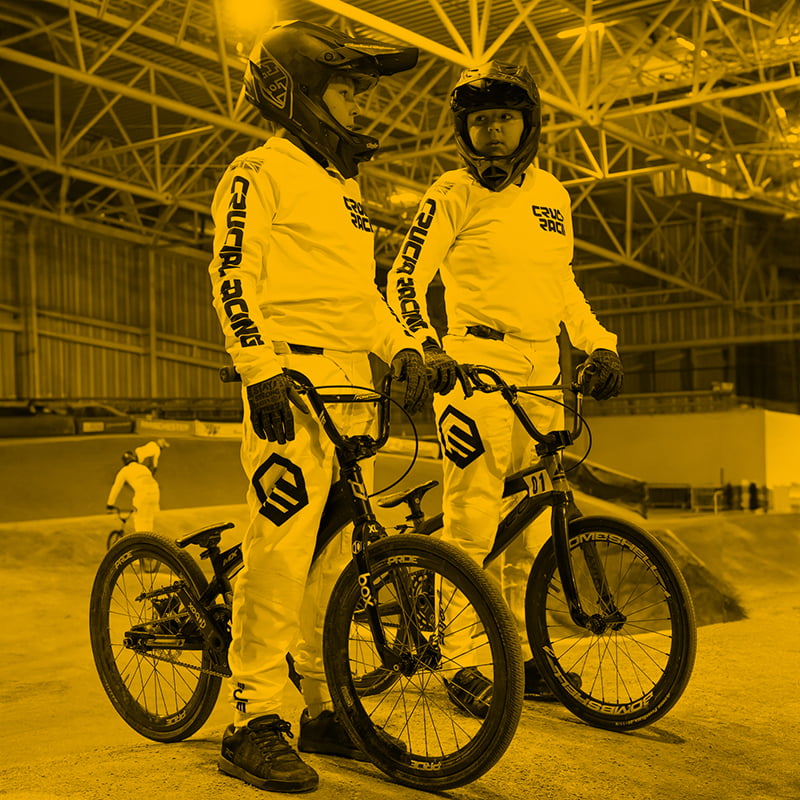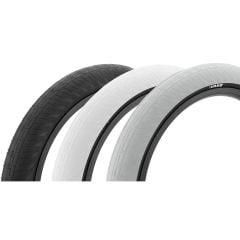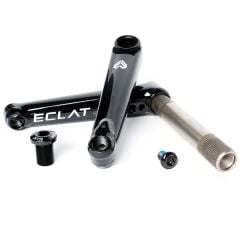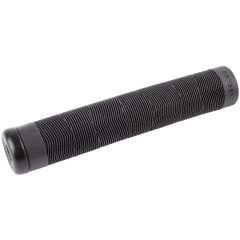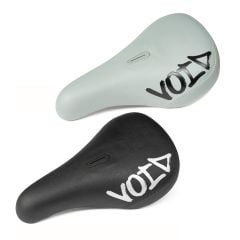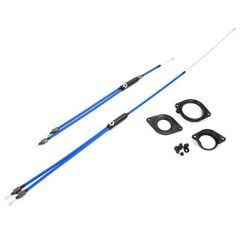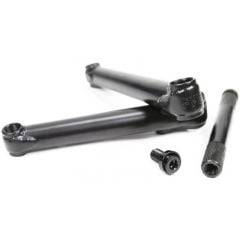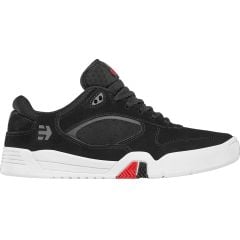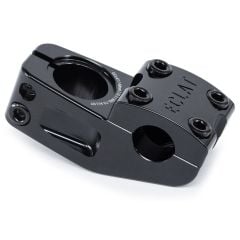Dig Photo Annual 2022 BMX Book
DIG PHOTO ANNUAL #2022 - 220 pages of global BMX coverage... Read More
DIG PHOTO ANNUAL #2022 - 220 pages of global BMX coverage.
On the cover: Reed Stark - Denver, CO. Photo by Wes McGrath
The DIG Awards 2022: A selection of our faves from the past 12 months. Rider of the Year, Video part of the Year, Crew of the Year & more...
BSD Does Denver: You never know what you’re going to get with these boys, and I don’t think they really did either!
A UK Trails Trip: Our man in Chicago, David Leep, samples some of the UK’s finest trails and local crew hospitality, with Mark Potozcny, Tom Arkus and more.
A Nice Stew of Souvenirs: Some overstimulation of the brain box with the Kink crew in Lyon at the height of Summer.
The Return To Puerto Rico: 10 years later. Rob Dolecki and the Meseroll crew head to paradise.
Zero Fucks Given - Chris “Baboon” Volkwine: The perspective of a highly skilled BMX park builder in a world of skaters.
A Lesson in Loyalty and Longevity: “Odyssey (and Vans) have remained by Gary’s side through-out his entire, completely radical, BMX career.”
The Felix Prangenberg Interview: “Unfortunately, there are a lot of people in BMX who think they’re better than other people.”
The Lewis Mills Interview: “At the time I felt like you’ll be fine, you just jump over and grind the rail.”
Jordan Godwin - A Work in Progress: “It’s hard to explain, but I hated feeling the way I did, but also couldn’t find the will to help myself.”
The Casey Starling Interview: “You gotta have an eye for cutty spots.”
Reed Stark - A Fork in the Road: “I’ve always wanted to expose another bike rider to the Burning Man environment that is so uniquely built.” - Wes McGrath
JAPAN: A look at one of the best up and coming street scenes in BMX via the lens of Hikaru Funyu.
S&M ‘Dirt’ Rules: All aboard for the unofficial ‘Reynolds Invitational’. Please make this a real thing…
Fast & Loose - The Endless Road Trip: “No time frame, no immediate plans to come back home, and freedom from traditional real-world responsibilities.”
Time Doesn’t Matter - 10 Years Of Chocolate Truck: Matt Miller looks back at a decade of Philly street riding memories.
The 2022 DIG Photo Contest: Over two thousand photos later and we’ve finally picked our winners…
WTP HAUS: As regular as Clockwork Orange. 3 weeks in London with a hefty worldwide crew.
SOUTH AFRICA: Jason Prins, Murray Loubser and Kevin Schinder enhancing some incredible scenery for the lens of Wayne Reiche
2022 in Photos: A month by month break down of the whole
year in 90 images.
- Lead Time: 0
New Rider?
Choosing the correct bike for your discipline is extremely important, and sometimes for those new to the sport it can be difficult to know or decide, so we’ve broken down the main differences to help you make a decision.
Freestyle bikes are designed for the skatepark, the streets or the trails. They are constructed from strong, hard wearing materials and usually feature Steel or Chromoly frames. This means that the bike can stand up to a certain amount of impacts and hard landings, but remember no bike is indestructible. For riders looking to learn tricks and stunts, then a freestyle bike is the correct choice.
Race bikes are designed specifically with the track in mind, they are nimble lightweight machines for putting down quick lap times. Typically, they are constructed from lightweight materials like aluminium and carbon fibre to keep the weight down and the rider at the front of the pack. These bikes are strong enough for smooth landings on race and pump tracks but will not take the abuse that a freestyle bike would in concrete skateparks. If you’re looking to set fast lap times or begin your competitive career on the track, a race bike is the right choice.
Choosing the correct size BMX bike is very important, bikes that are too large will be cumbersome and hard to manoeuvre and bikes that are too small can feel cramped and hard to keep under control.
Youth freestyle bikes are sized depending on the diameter of the wheel staring at 12” all the way through to 18”, at a 20” wheel the bike is considered an adult size. Adult freestyle bikes are sized on top tube length, a 18.5” top tube is extra small for younger teenagers who have just moved up to an adult bike, a 20” top tube is small, 20.5” a medium and anything over a 21” is considered large.
Race bikes feature 20-inch wheels on all models, but the components and frame are sized dependent on age and height. Youth race bikes start from a Micro size for very young riders and offer a range of sizes through to expert XL. Pro size and upwards are considered adult bikes and are usually offered up to a Pro XXXL or larger for very tall riders.
We recommend consulting our height charts from the link below to help you choose your perfect sized bike:
Choosing the right level bike for your riding ability is important. Components that are not suitable for your level of riding can wear or fail much sooner than expected. Although BMX bikes can look very similar, under the surface components and materials used can vary greatly.
All our bikes are cherry picked from the very best BMX specialist brands, and all our bikes are designed specifically for use at the skatepark or on the track.
FREESTYLE BIKES
For first time riders new to the sport our entry level bikes, priced from £200-£400, are perfect, most of these are made from high tensile steel which means they are still relatively strong, but can be slightly heavier than higher end models. You might find you’ll want to upgrade to something lighter sooner than you’d think. If you are planning on using the bike in rain or bad weather, we do strongly advise choosing a model with fully sealed bearings all round.
If you are already confident on a bike and have some experience in skateparks or performing tricks and jumps then we would recommend choosing a mid-range bike, priced from £400 to £700, with a full Chromoly frame, fork, and bars. This will be lighter and stronger than an entry level model.
For an experienced person that is already capable of performing most tricks and has previously owned BMX bikes then a high-end complete bike, or full custom would be suggested to meet the demands of this rider, these bikes are priced from £700 plus.
RACE BIKES
Our range of entry level race bikes are perfect for first time racers, usually priced between £200 and £400 most of these are constructed of heavier steel rather than aluminium. These are great to get a feel for the sport but would not be able to keep up in a competitive environment.
Our mid-range race bikes are the perfect for riders who are beginning their path to competitive racing. Priced between £400 and £800 these are not quite the high-end steeds you see at national level races, but they all feature lightweight aluminium frames and are designed specifically with the racetrack in mind.
For experienced riders who are already racing confidently at a competitive level we offer a small range of high-end complete bikes. These are usually priced between £800 and £1500 and feature many aftermarket components like carbon forks, disc brakes and folding tyres. However, at this level we highly recommend building a full custom bike, usually costing between £1500 and £3000 all components can be chosen specifically with the rider in mind. For help on building a custom bike give us a call or drop us an email!
One of our most frequently asked questions in freestyle is, which rear hub do I want, a freecoaster or a cassette? Most experienced riders know their preference, but if you’re new to the sport it can be difficult to know which choice to make.
The main difference between the two is the way the bike performs when going backwards. A traditional cassette hub requires the rider to pedal in time with the rotation of the wheel while travelling backwards, while a freecoaster allows the rider to travel backwards while keeping the pedals level in the same position as riding forwards.
Although this may seem like a brilliant feature, it does come at a price! Freecoaster hubs feature a “Slack” before engagement while pedalling forward. This means that you can turn the crank a set amount (Usually an adjustable amount) before the drivetrain engages. This is referred to as the “Slack”, when riding backwards you must keep your feet positioned within the slack, if your pedals rotate too much the drivetrain will engage and your pedals will start to rotate. The smaller the slack, the harder it is to keep your pedal positioned within it while riding backwards. This means that certain tricks are harder to perform, especially those that rely on pedal pressure, for example Tire Taps.
